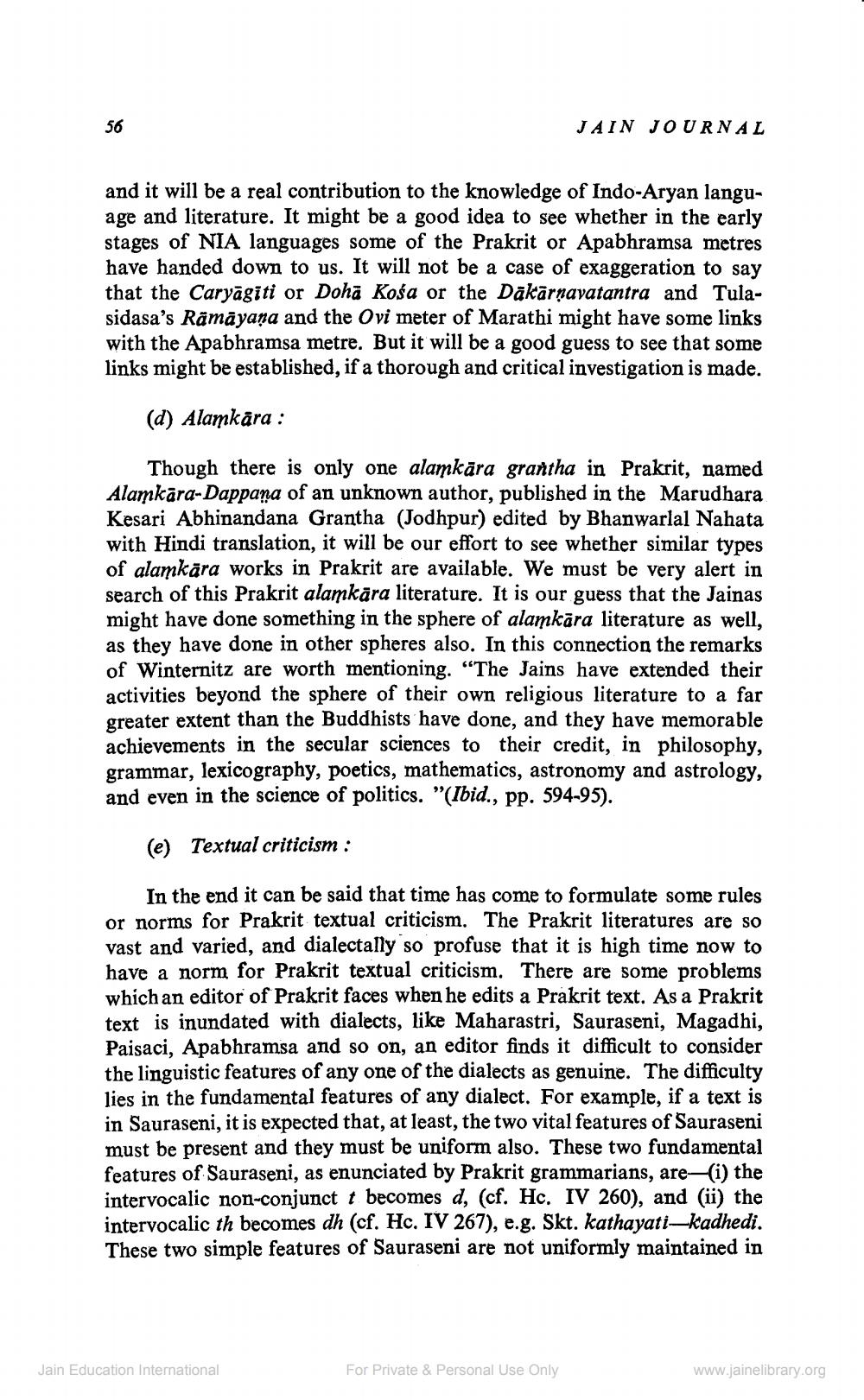________________
56
and it will be a real contribution to the knowledge of Indo-Aryan language and literature. It might be a good idea to see whether in the early stages of NIA languages some of the Prakrit or Apabhramsa metres have handed down to us. It will not be a case of exaggeration to say that the Caryagiti or Dohā Kosa or the Dākārṇavatantra and Tulasidasa's Rāmāyaṇa and the Ovi meter of Marathi might have some links with the Apabhramsa metre. But it will be a good guess to see that some links might be established, if a thorough and critical investigation is made.
(d) Alamkara:
JAIN JOURNAL
Though there is only one alamkāra grantha in Prakrit, named Alamkara-Dappaṇa of an unknown author, published in the Marudhara Kesari Abhinandana Grantha (Jodhpur) edited by Bhanwarlal Nahata with Hindi translation, it will be our effort to see whether similar types of alamkāra works in Prakrit are available. We must be very alert in search of this Prakrit alamkāra literature. It is our guess that the Jainas might have done something in the sphere of alamkāra literature as well, as they have done in other spheres also. In this connection the remarks of Winternitz are worth mentioning. "The Jains have extended their activities beyond the sphere of their own religious literature to a far greater extent than the Buddhists have done, and they have memorable achievements in the secular sciences to their credit, in philosophy, grammar, lexicography, poetics, mathematics, astronomy and astrology, and even in the science of politics. "(Ibid., pp. 594-95).
(e) Textual criticism:
In the end it can be said that time has come to formulate some rules or norms for Prakrit textual criticism. The Prakrit literatures are so vast and varied, and dialectally so profuse that it is high time now to have a norm for Prakrit textual criticism. There are some problems which an editor of Prakrit faces when he edits a Prakrit text. As a Prakrit text is inundated with dialects, like Maharastri, Sauraseni, Magadhi, Paisaci, Apabhramsa and so on, an editor finds it difficult to consider the linguistic features of any one of the dialects as genuine. The difficulty lies in the fundamental features of any dialect. For example, if a text is in Sauraseni, it is expected that, at least, the two vital features of Sauraseni must be present and they must be uniform also. These two fundamental features of Sauraseni, as enunciated by Prakrit grammarians, are—(i) the intervocalic non-conjunct t becomes d, (cf. Hc. IV 260), and (ii) the intervocalic th becomes dh (cf. Hc. IV 267), e.g. Skt. kathayati-kadhedi. These two simple features of Sauraseni are not uniformly maintained in
Jain Education International
For Private & Personal Use Only
www.jainelibrary.org




